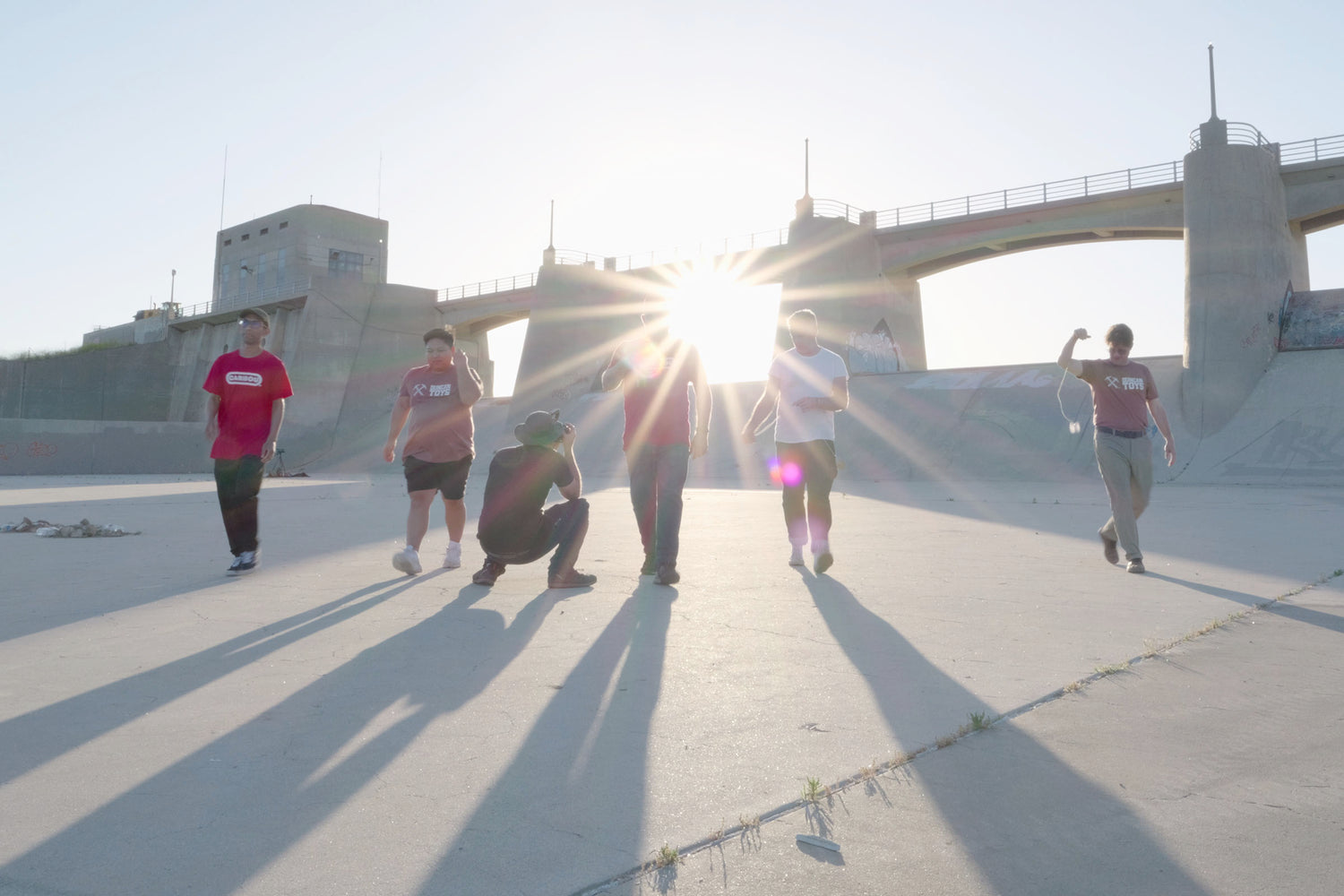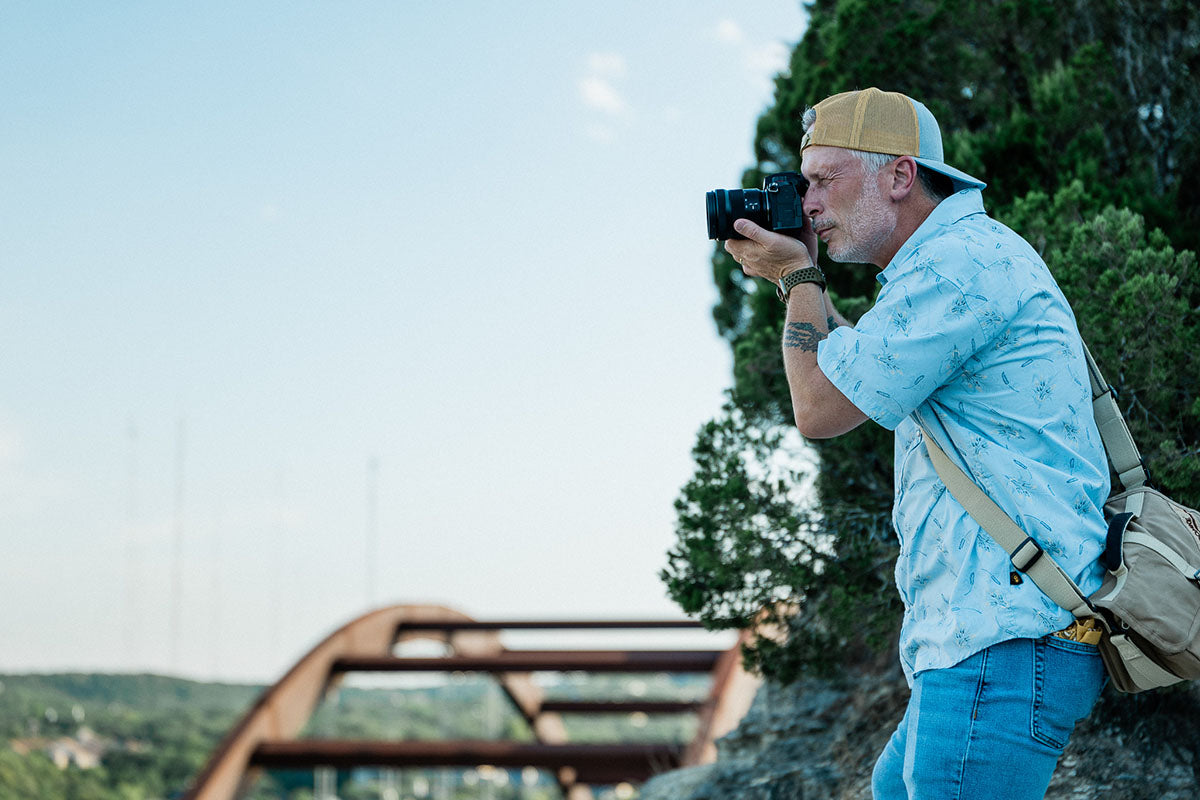Durante décadas, el atractivo cinematográfico de la grabación anamórfica se reservó para producciones de gran presupuesto y equipos con mayores recursos. Los objetivos pesados y costosos, junto con las dificultades técnicas para su manejo, la hacían poco práctica para la mayoría de los cineastas independientes, especialmente para proyectos con un solo camarógrafo. Llega la LUMIX GH7 y el objetivo anamórfico Laowa Nanomorph 1.5x . Estas herramientas han transformado el sector, facilitando más que nunca la creación de un documental anamórfico para un solo camarógrafo.
Cuando el fotógrafo, cineasta y embajador de LUMIX , Ben Staley, se propuso crear Jou-Jou, un cortometraje visualmente cautivador centrado en el yo-yo profesional, se adaptó a esta nueva realidad. Equipado con la compacta GH7 y un objetivo Nanomorph de 20 mm, capturó el arte del yo-yo con claridad y estilo cinematográfico en ARRI LogC3. Staley transformó lo que podría haber sido un concepto de nicho en una narrativa visual cautivadora, todo mientras trabajaba como fotógrafo en solitario.
"Jou Jou", un cautivador cortometraje de Ben Staley, cobró vida gracias a la LUMIX GH7 combinada con la lente anamórfica Laowa Nanomorph 1.5x 20 mm.
La inspiración de Staley para Jou-Jou provino de su viejo amigo Mark McBride, una leyenda del yo-yo. Décadas atrás, McBride había grabado vídeos de yo-yo en baja fidelidad con una Canon XL1, que solía prestarle a Staley para rodar sus propias películas. Para un proyecto de reunión, Jou-Jou, Staley quería conservar esa autenticidad, pero realzarla con tecnología moderna, combinando lo mejor de ambos mundos.
"Pensé que sería genial aparecer con una lente anamórfica y una cámara moderna para grabar imágenes realmente impactantes", dijo Staley. "Es algo que ni siquiera hubiéramos soñado hacer hace 20 años".

Staley se inspiró en su viejo amigo Mark McBride (en la foto), una figura legendaria en el mundo del yo-yo para crear "Jou Jou".
La LUMIX GH7: el sueño de un cineasta en solitario
La GH7 se convirtió en la piedra angular de la producción de Jou-Jou. Conocida por su tamaño compacto y sus funciones avanzadas, la GH7 está diseñada específicamente para operadores individuales. Para Staley, su capacidad de grabar a 240 fotogramas por segundo en 1080p fue crucial para capturar los rápidos movimientos de los yo-yos. Cada segundo de acción en tiempo real se transformaba en 10 segundos de cámara lenta, revelando más detalles.
“La función de cámara lenta fue perfecta para capturar los rapidísimos movimientos de los yo-yos y sus dedos”, explicó Staley. “Nos permitió apreciar la maestría en sus movimientos que, de otro modo, pasaría desapercibida”.
Lo que hizo de la GH7 algo tan único para Staley fue su capacidad de descomprimir el metraje anamórfico para que pudiera verlo directamente en la cámara. Esto eliminó la necesidad de monitores externos y le proporcionó información en tiempo real mientras encuadraba sus tomas. Lo describió como una "revolución", especialmente para un fotógrafo que trabaja solo sin equipo.

La exclusiva función de descompresión de la GH7 permitió a Staley ver imágenes anamórficas directamente en la cámara.
La lente Laowa Nanomorph 1.5x: Anamórfica al alcance de todos
Tradicionalmente, los objetivos anamórficos han sido pesados, caros y difíciles de manejar, factores que los mantenían fuera del alcance de muchos cineastas independientes. El objetivo Laowa Nanomorph 1.5x cambia esa perspectiva. Compacto, ligero y asequible, ofrece las impresionantes cualidades cinematográficas de la grabación anamórfica, a la vez que es fácil de manejar y perfecto para la grabación en movimiento. Con opciones para diferentes monturas de objetivo y destellos de color (ámbar, azul y plateado), también permite a los cineastas crear una apariencia anamórfica única, añadiendo una capa extra de expresión creativa a cada toma. Los versátiles factores de compresión de la GH7 y el rendimiento óptico de Laowa permitieron a Staley capturar una apariencia cinematográfica sin comprometer la movilidad ni el presupuesto.

El lente Laowa Nanomorph 1.5x compacto y liviano brinda calidad anamórfica cinematográfica a la realización de películas en movimiento.
El destello plateado del objetivo le dio un toque visual único, especialmente en tomas al aire libre, donde Staley apuntó directamente al sol. Con una apertura T2.2 a 240 fps, no usó filtros ND, ajustando el objetivo a f/5.6 o f/8 para una exposición óptima en condiciones de mucha luz. Su robusta construcción y su intuitivo diseño de enfoque manual lo convirtieron en el compañero ideal para la filmación de rodajes rápidos. «La calidad de construcción del Nanomorph es excepcional», afirmó Staley. «Es pequeño, robusto y fácil de usar, incluso sin accesorios como el follow focus».
Juntos, la GH7 y el lente Nanomorph crearon una configuración que habría sido impensable hace solo unos años: un equipo para un solo disparador capaz de producir imágenes anamórficas de alta calidad con un equipo mínimo.
La GH7 ofrece todo lo que necesito como cineasta profesional. Desde la descompresión anamórfica hasta la estabilización de imagen, todo está integrado en este pequeño dispositivo. Es algo que no se ve en otros sistemas.
El cineasta Ben Staley
Ampliando los límites para los creadores en solitario
Con la GH7 y el objetivo Nanomorph, Staley trabajó con gran eficiencia y se sorprendió al haber grabado todo el cortometraje en menos de una hora. Gracias a las herramientas de enfoque y exposición de la GH7, se aseguró de que cada toma fuera precisa. A pesar de la brevedad del rodaje, capturó más de cinco horas de metraje gracias a la alta velocidad de fotogramas de la cámara.

La presa Sepúlveda, una popular locación cinematográfica en Los Ángeles, proporcionó un impresionante telón de fondo. Sus losas de hormigón reflectantes añadieron un rebote de luz natural, iluminando los rostros de los sujetos sin necesidad de equipo de iluminación adicional. El rango dinámico de la GH7 garantizó que las imágenes capturaran tanto el cielo brillante como los detalles más sutiles de las expresiones de los participantes.
El mayor reto de la sesión fue capturar los rápidos e impredecibles movimientos de los yo-yos, manteniendo al mismo tiempo la estética cinematográfica de la grabación anamórfica. Staley solía tumbarse boca arriba en el suelo, disparando hacia arriba para mantener los yo-yos encuadrados y añadir una perspectiva dramática. La estabilización de imagen de la GH7 fue crucial, permitiéndole mantener la estabilidad en las tomas incluso con el objetivo de cine manual. Como muchas cámaras LUMIX, la GH7 incluye un modo anamórfico para la estabilización. Al usar este modo, el IBIS se ajusta con precisión para adaptarse al campo de visión más amplio y a la distorsión óptica típica de los objetivos anamórficos. «La estabilización de la GH7 fue crucial», comentó Staley. «Me permitió mantener la estabilidad en las tomas, incluso usando un objetivo de cine manual con un aumento de 1,5x».

El modo de estabilización anamórfica de la GH7 optimiza el IBIS para la visión amplia y la distorsión de las lentes anamórficas.
La posproducción fue igualmente optimizada. Staley importó su metraje a Final Cut Pro X, lo descomprimió horizontalmente un 150% y lo redujo a una pieza pulida de cuatro minutos. Se requirió una corrección de color mínima, ya que el metraje ARRI Log C de la GH7 conservaba un rango dinámico y un detalle excelentes. "Apenas lo coloreé", admitió Staley. "Solo apliqué una LUT ARRI 709 e hice algunos ajustes aquí y allá. Los colores y el rango dinámico se mantuvieron impecables".
El resultado de la obra de Staley, Jou-Jou, es mucho más que un video de yo-yo. Muestra cómo la tecnología cinematográfica se ha vuelto más accesible y cómo los límites creativos pueden inspirar grandes obras. Los destellos horizontales, el formato de pantalla panorámica y la alta velocidad de fotogramas se combinan para resaltar el arte del yo-yo de una manera que se siente a la vez íntima y épica. "Nunca había visto imágenes como esta, especialmente de yo-yo", reflexionó Staley. "Es difícil hacer algo único, pero creo que lo logramos".

El mayor desafío de Staley fue capturar los movimientos rápidos e impredecibles de los yo-yos preservando la estética anamórfica cinematográfica.
El futuro del disparo anamórfico para todos
La experiencia de Staley con Jou-Jou subraya un cambio significativo en el panorama cinematográfico. Lo que antes era dominio exclusivo de producciones con una sólida financiación ahora es accesible para cineastas independientes y operadores individuales. La GH7 y el objetivo Nanomorph han reducido las barreras de entrada, permitiendo a una nueva generación de narradores experimentar con la grabación anamórfica.
“La GH7 ofrece todo lo que necesito como cineasta profesional”, dijo Staley. “Desde la descompresión anamórfica hasta la estabilización de imagen, todo está integrado en este pequeño dispositivo. Es algo que no se ve en otros sistemas”.

Para los cineastas que buscan superar los límites creativos sin equipo ni equipo pesado, la combinación de la GH7 y el objetivo Nanomorph representa una oportunidad revolucionaria. Jou-Jou demuestra que los documentales anamórficos de un solo disparo ya no son un sueño: ahora son accesibles.



